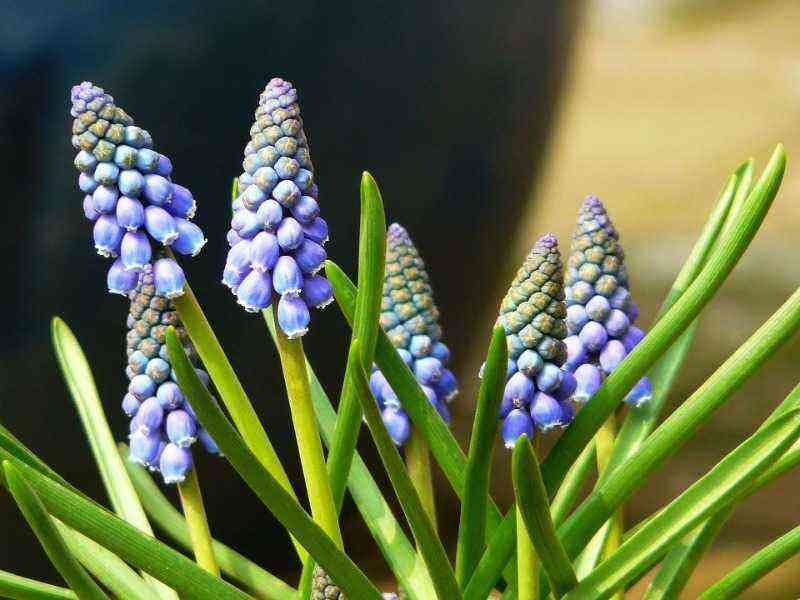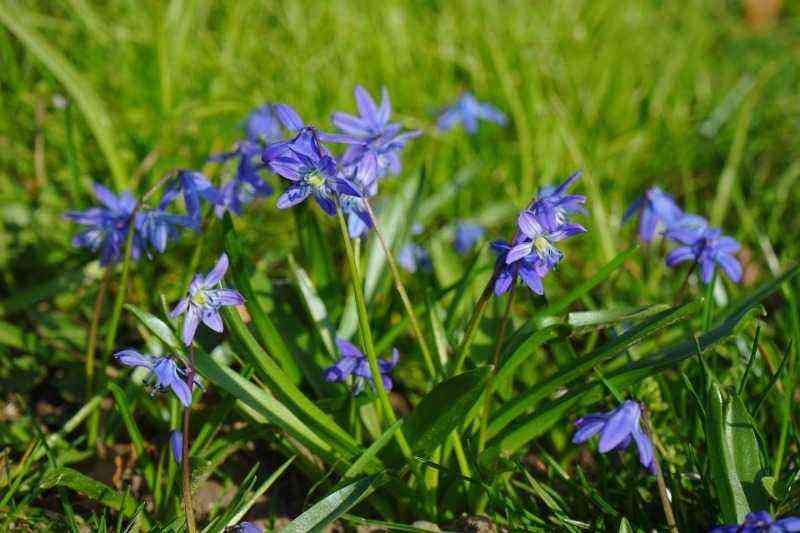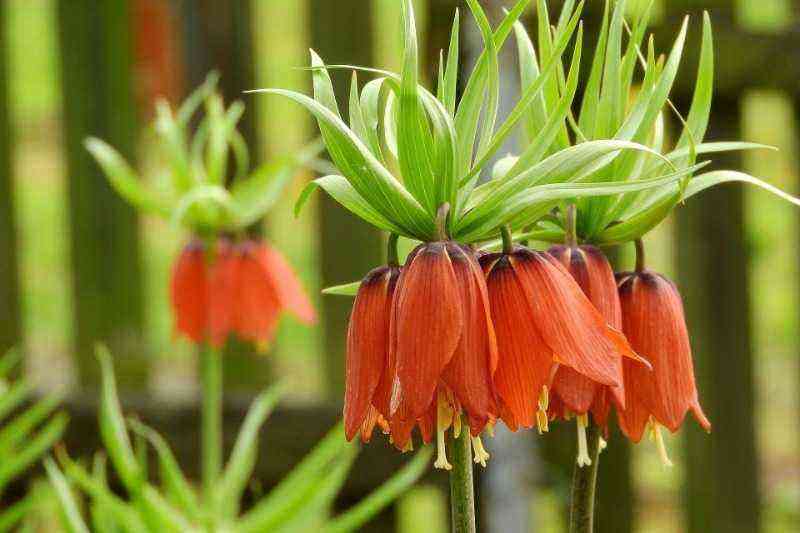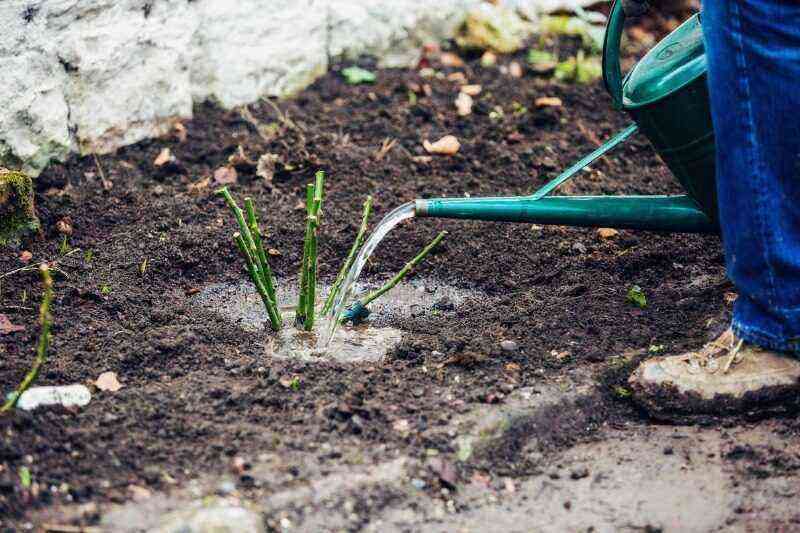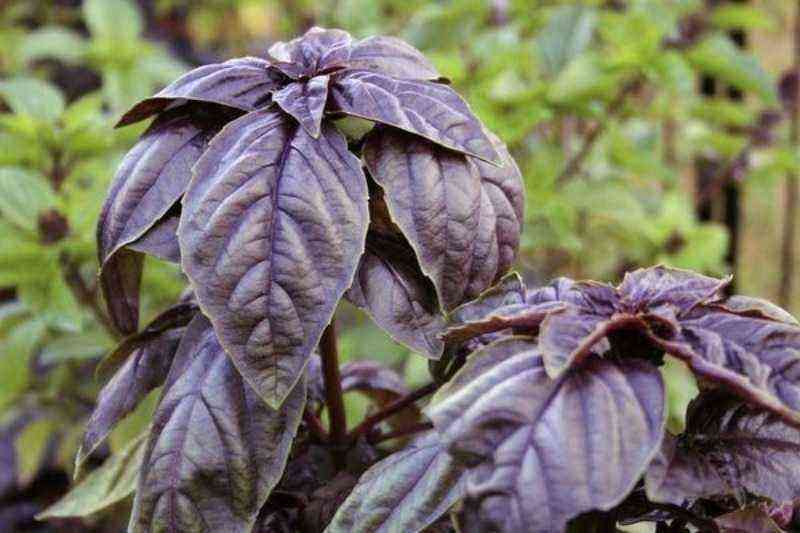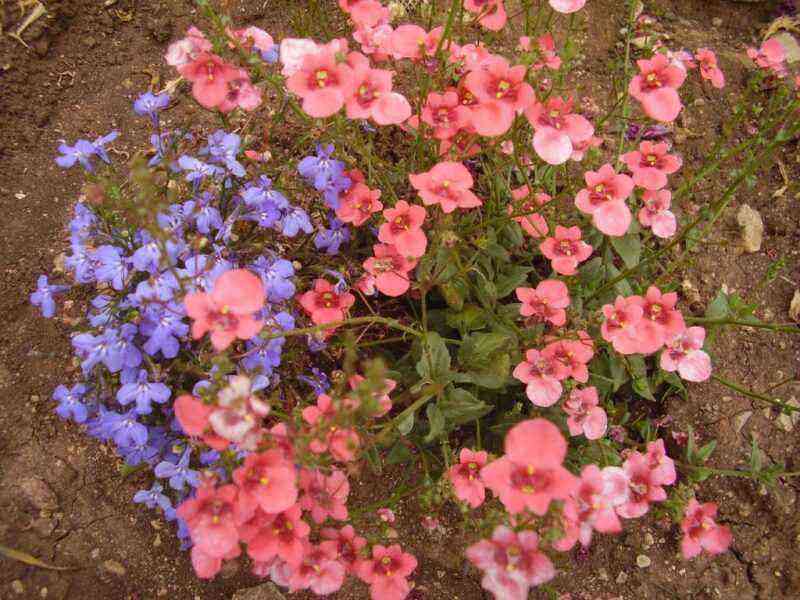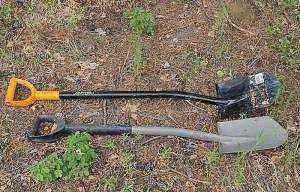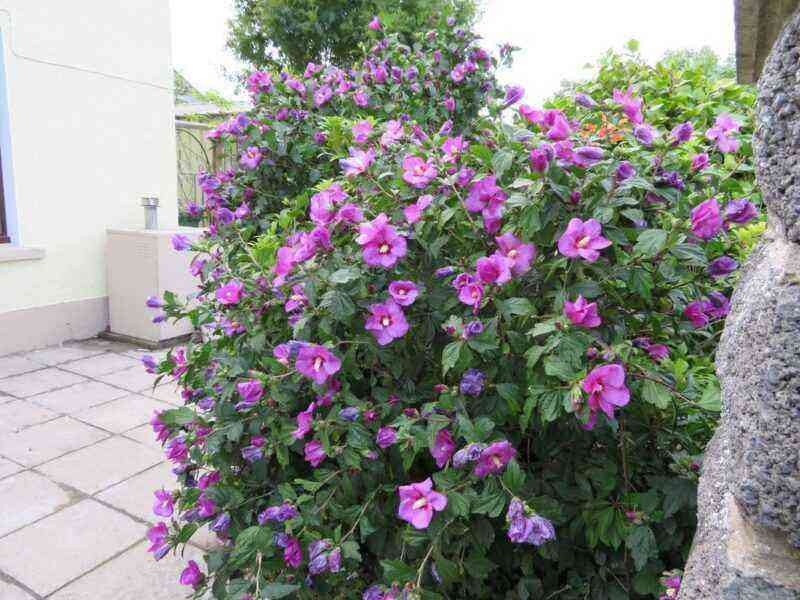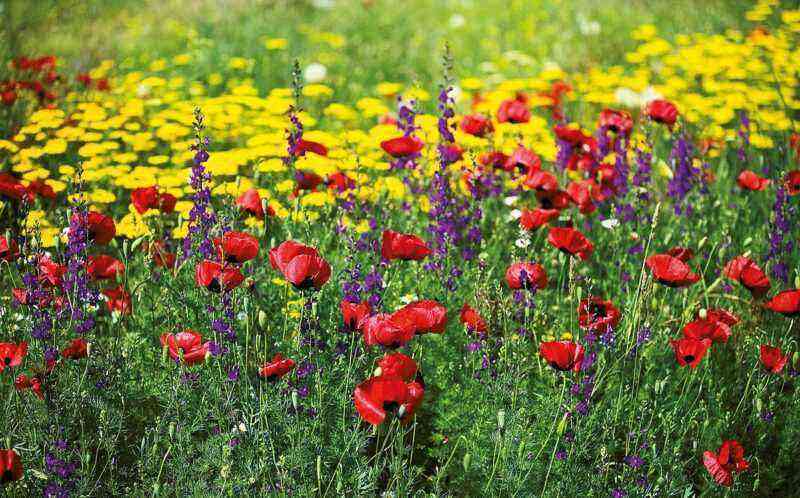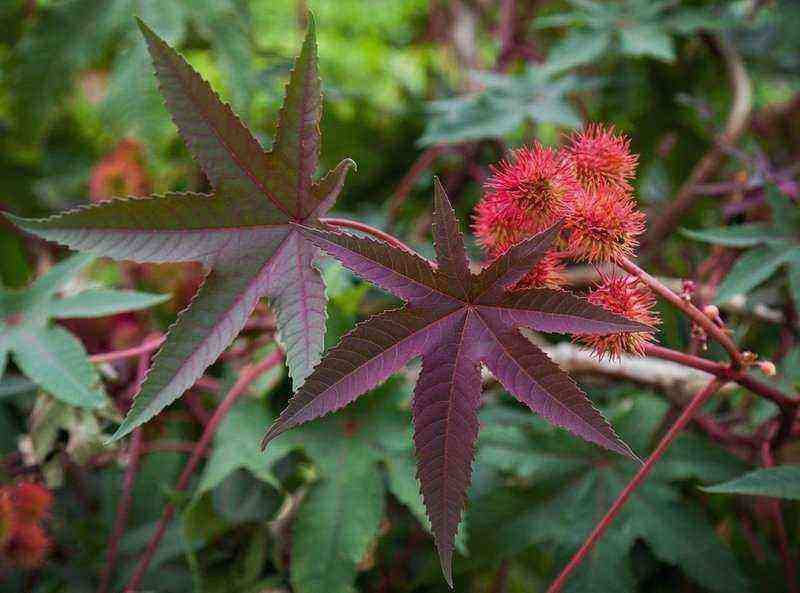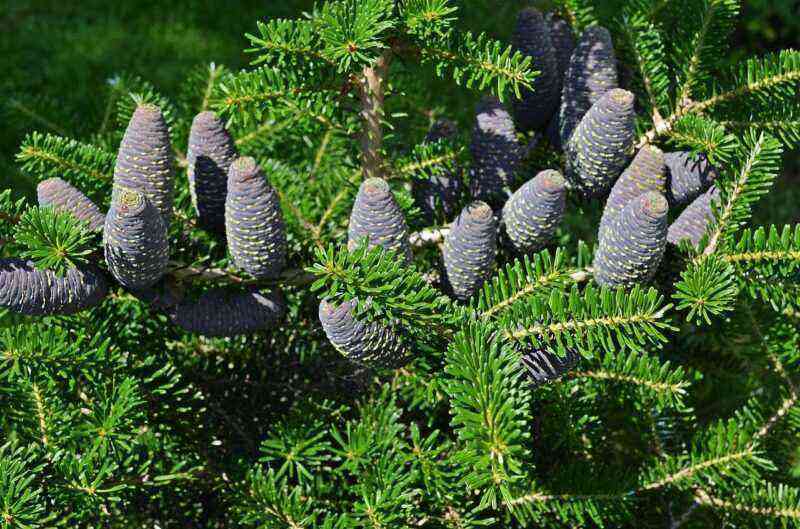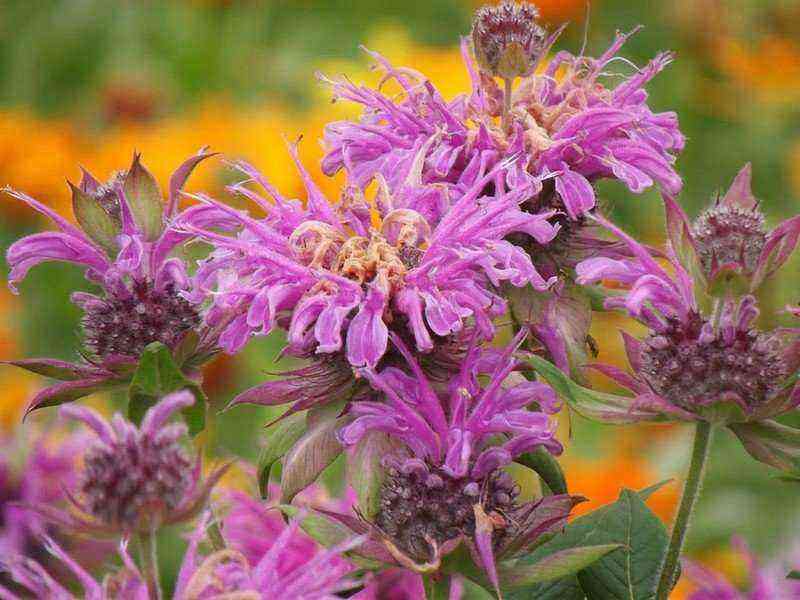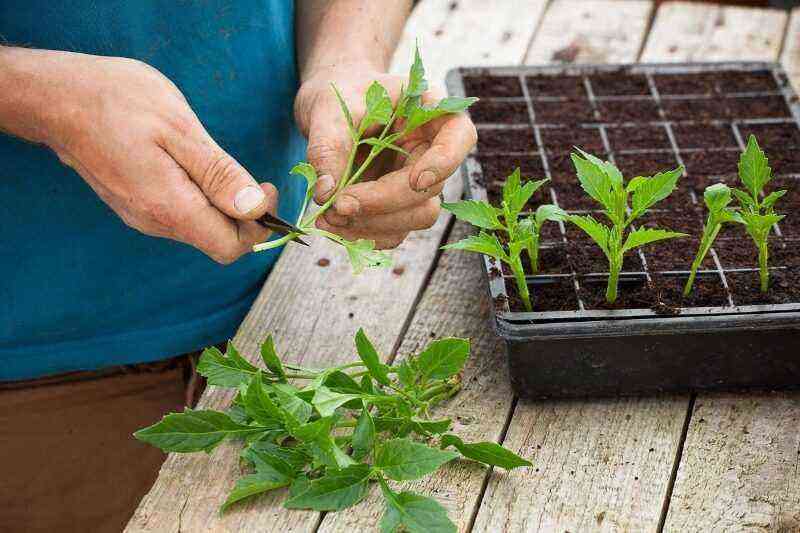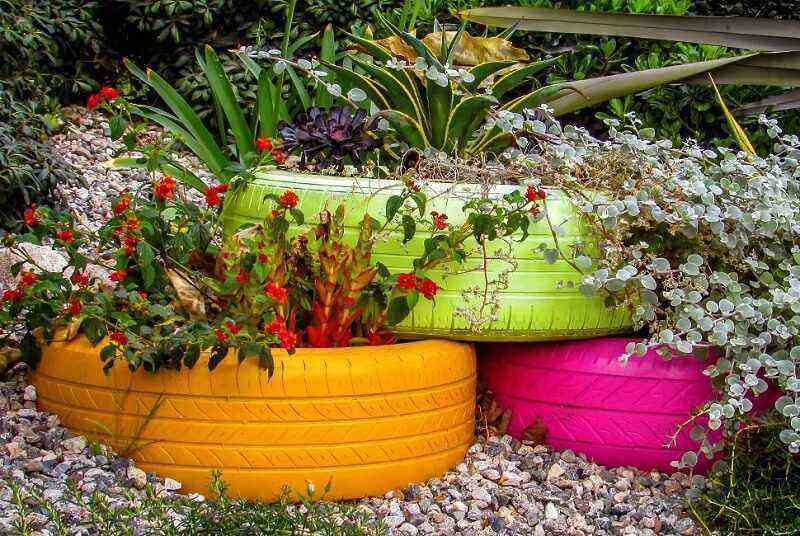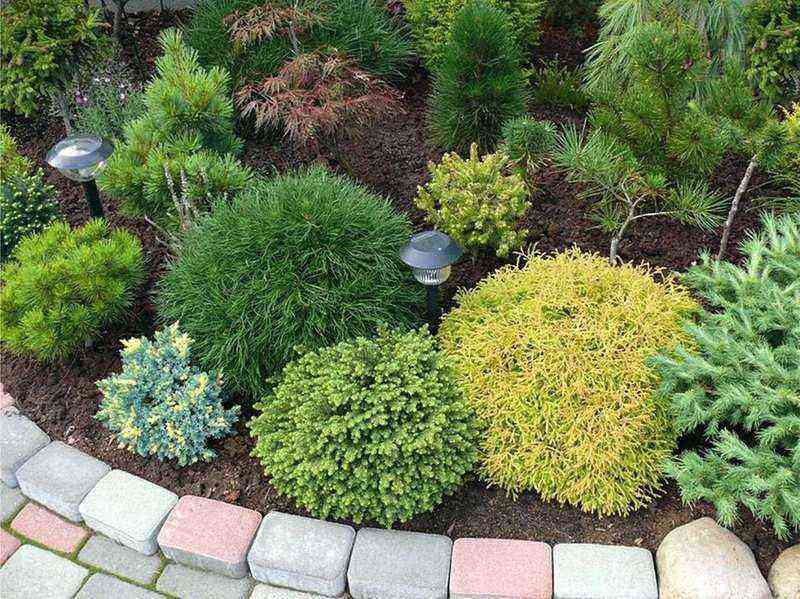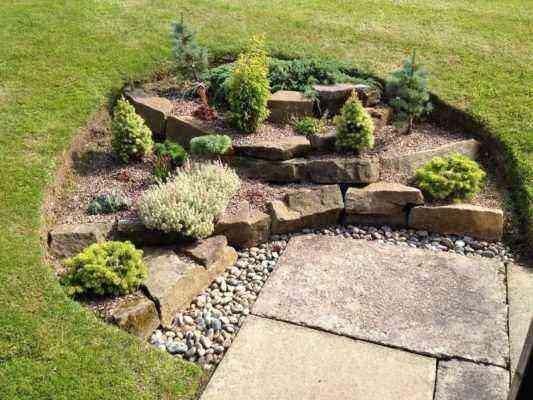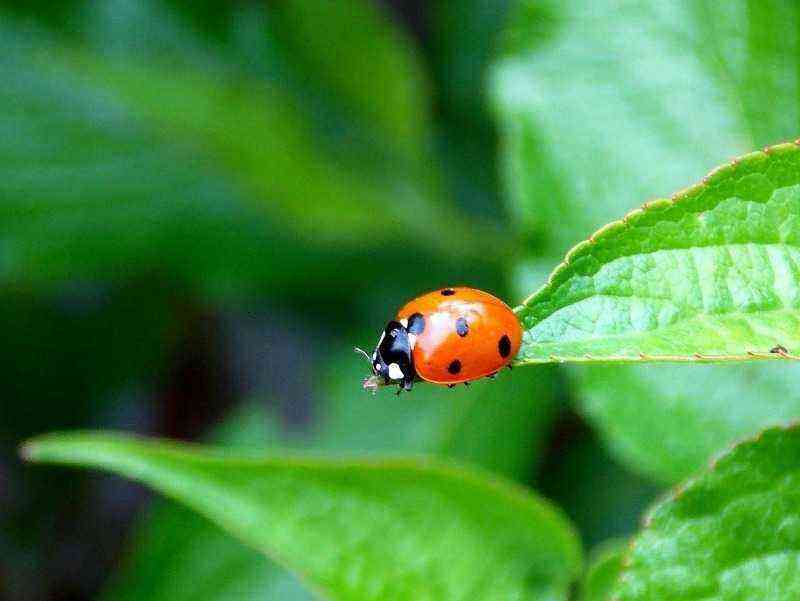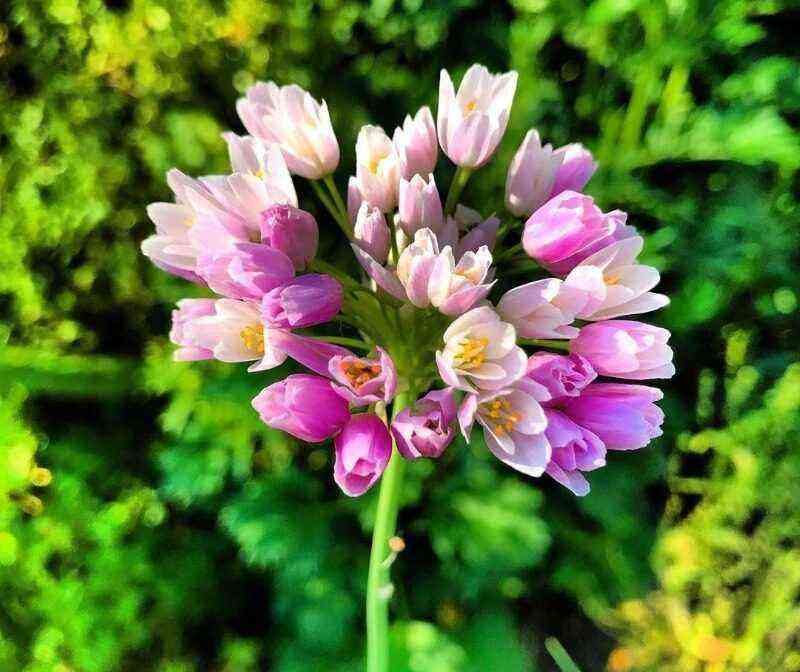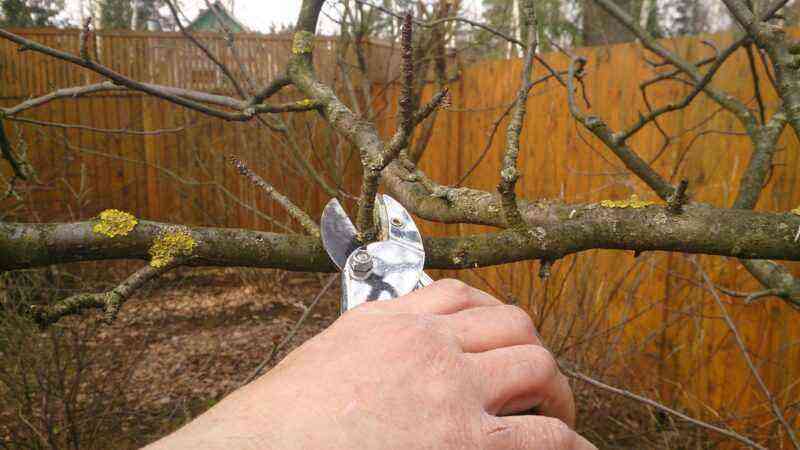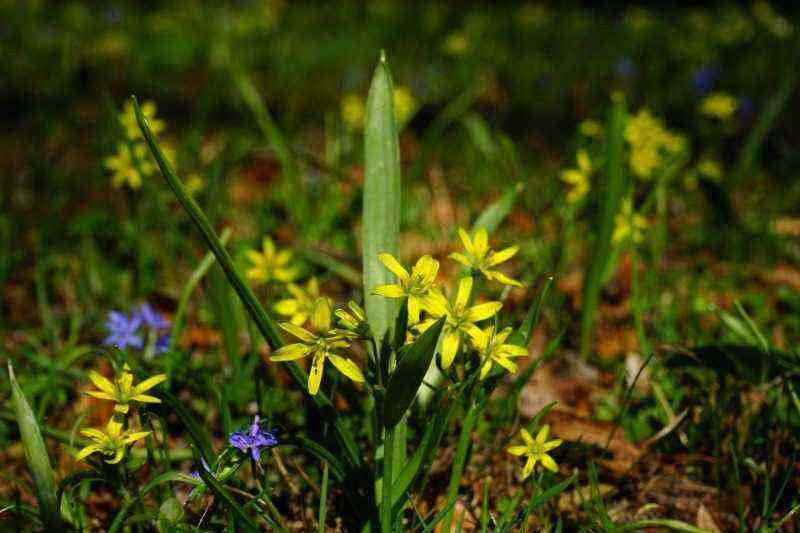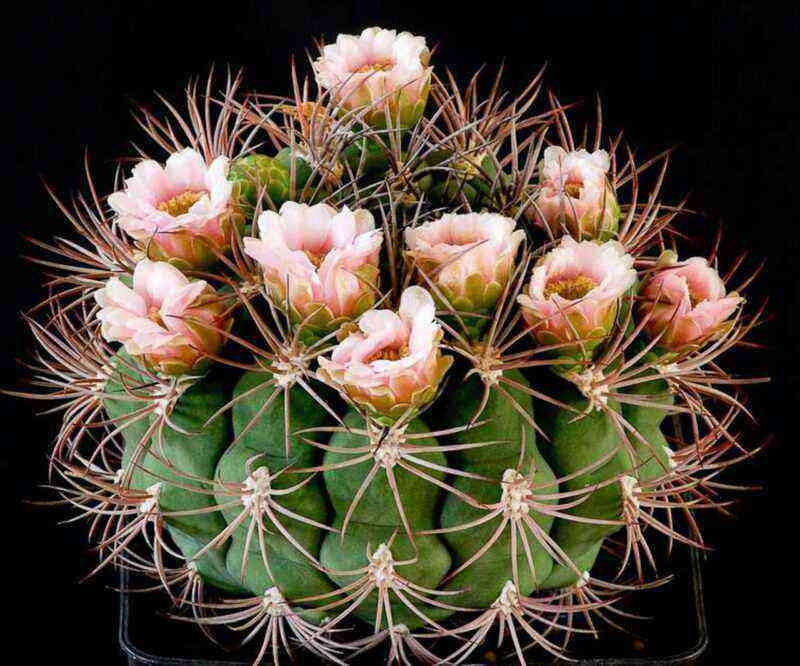Primroses appear in the garden when the ground is just starting to warm up. They not only decorate the site, but also create a special atmosphere, cheer up. To see them in the coming spring, you should plant the bulbs in the fall.
Muscari
The best time to plant muscari is September to mid October.
Before planting, the bulbs are soaked for 30 minutes in a 2% solution of “Karbofos”, and then for the same time – in a 1% solution of potassium permanganate.
The day before planting, prepare the soil. To do this, the dug holes are plentifully spilled with water and sand is added for drainage.
Large bulbs are buried 6-7 cm with an interval of 5-8 cm.Small planting material – 2-3 cm, leaving 3 cm between them.
Muscari does not require special care. He needs moisture only during the growing season. But at this time, after the snow melts, the soil is sufficiently moistened, so watering is not needed.
Colchicum
Most species of colchicum, or colchicum, bloom in the fall, but there are those that will delight gardeners with their beauty in early spring. These include yellow colchicum, Hungarian, Kesselringa. Their buds appear immediately after the snow melts.
Colchicum is planted in late August and early September. An area with stagnant water is not suitable for this plant; from excess moisture, it can get sick with gray rot. In addition, slugs breed in humid places – dangerous enemies of the crocus.
The soil is prepared in advance by adding 1 bucket of humus and 0,5 buckets of sand per 1 sq. m area. Immediately upon landing, 1 tbsp is introduced. l. superphosphate and 1 liter of ash per 1 sq. m.
Large specimens are planted to a depth of 15-20 cm with a distance of 20 cm between them. Small ones – to a depth of 7-8 cm.
In no case should the scaly tube be cut off. When landing, it should protrude from the ground. A bud will rise through this tube.
To protect against slugs, the aisles are filled with gravel.
Crocus
To enjoy the spring bloom of crocuses, planting is carried out in September in Siberia and the Urals. In central Russia, with a warm autumn, they are planted in late September-October. In the southern regions – in early November.
The bulbs begin to develop when the temperature drops to + 10 ° C. Before winter, they must have time to take root.
Crocuses grow best in lighted areas without moisture stagnation. The site is dug up 2 weeks before planting. This will increase the breathability of the soil. In places where moisture accumulates to a depth of 20 cm, drainage from gravel is laid. You don’t need to fertilize crocuses in autumn.
The depth of the holes is determined based on the composition of the soil and the size of the planting material. Large bulbs on light soils are buried by 10 cm, if the soil is heavy – by 7-8 cm.
Small ones are buried by 4-5 cm and 3-4 cm, respectively. The gap between the holes is 6-10 cm. To create a thicker carpet of flowers, the distance can be reduced. However, it should be borne in mind that crocuses quickly grow overgrown with shoots and require transplantation.
Water the planting only if the soil is dry. Most crocus species are hardy. But some varieties should be covered with spruce branches at very low temperatures.
Ornithogalum
Ornithogalum, or poultry farm, is planted with bulbs in a lighted area. But the plant feels great in partial shade. Ornithogalum prefers sandy soil without stagnant water.
The holes are placed with a distance of 15-20 cm between them. Depth – 7-10 cm.
An onion is placed in each well, covered with earth and watered moderately. The plant does not require special care. Even a novice gardener can cope with its cultivation.
The poultry farm blooms from the beginning of May for 3 weeks.
Sparrows (scylla)
Scales, or scillas, look spectacular around trees, along curbs and on alpine slides.
Prepare the soil before planting. For better plant development, it is recommended to mix garden soil with forest soil, which includes rotten leaves and half-decayed bark.
The distance between the holes is 5-10 cm. The planting depth, depending on the size of the bulbs, is 6-8 cm.
The carp forests tolerate winter well, but during the period of severe frosts, they should be covered. In one place, these flowers can grow for many years without transplanting.
The Imperial Rybchik
September is a suitable month for planting the imperial hazel grouse.
It is advisable to pre-treat the bulbs with a solution of potassium permanganate and sprinkle with charcoal. In case of damage to the bulbs, a good result cannot be achieved, therefore, the planting material must be handled with care.
The landing site is chosen illuminated or with partial shade. The soil should be light, with the addition of peat.
If there is a suspicion of stagnant water at the landing site, coarse sand should be poured onto the bottom of the holes for drainage. Excessive moisture is destructive for hazel grouse.
To determine the optimal planting depth, multiply the height of the bulbs by 3. For low-growing varieties, a depth of about 12 cm is suitable, tall ones are buried by 20 cm. The bulbs are placed at an angle and sprinkled with sand, and on top – with loose earth.
Iridodicium
The time for planting iridodictium in the ground is determined taking into account the region. In the northern regions and in the middle lane, it is planted in early September, in the southern ones – at the end of the month.
Snowdrop irises need good lighting and drained soil. Stagnant water can provoke diseases of the root system.
The wells are spaced 10 cm apart. Large bulbs are placed 7-8 cm deep, small ones 4-5 cm deep. Up to 10 bulbs are planted nearby.
Iridodictium tolerates frost down to -10 ° C. In a more severe winter, plantings should be covered with spruce branches or dry leaves.
